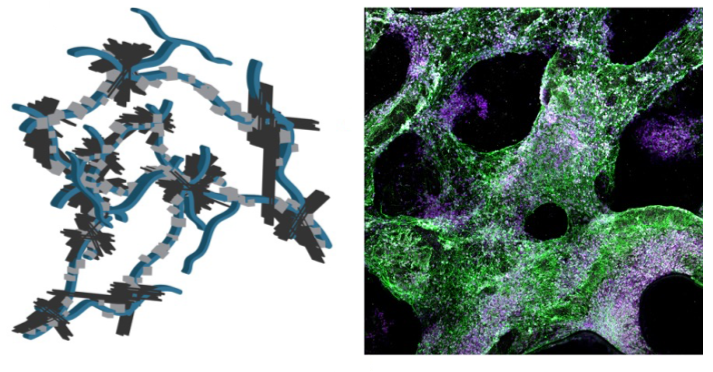Viscoelastic Conductive Materials Interface with the Nervous System

Soft viscoelastic materials have been designed and fabricated to both mimic the mechanical properties of brain tissue and conduct electricity. These materials can be interfaced with neural cells, including stem and progenitor cells and direct their differentiation into networks.
This work provides a new system to study how cells in the brain form networks. Such materials may also be used as electrodes in devices implanted in the brain in order to record electrical activity or provide electrical stimulation. This technology may ultimately allow for the creation of biohydrid neural interfaces and living electrodes.
Article:
A soft, stimulating scaffold supports brain cell development ex vivo
Publication:
Tringides, C.M., M. Boulingre, A. Khalil, T. Lungjangwa, R. Jaenisch, and D.J. Mooney, "Tunable conductive hydrogel scaffolds for neural cell differentiation," Advanced Healthcare Materials 12 (7), 2202221 (2023) ![]()
![]()
David J. Mooney (Bioengineering),
A. Khalil (Harvard, MIT), and R. Jaenish (MIT)
2022-2023 Harvard MRSEC (DMR-2011754)
